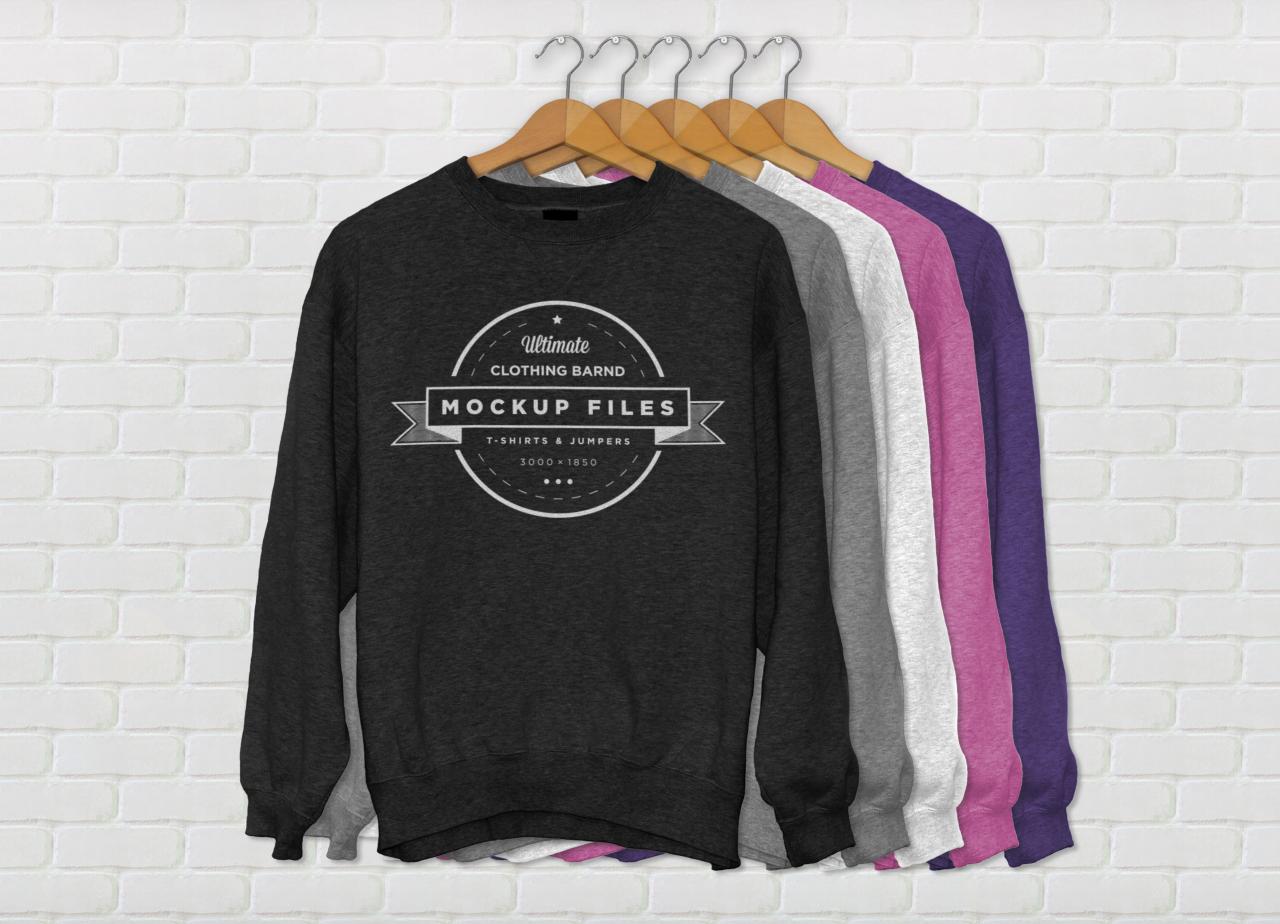Jumper Mockups: A Comprehensive Guide to Elevate Your Apparel Designs
Introduction
In the competitive fashion industry, presentation is paramount. Creating visually captivating and realistic product images can significantly influence customer engagement and sales conversions. Jumper mockups play a crucial role in this realm, enabling designers to showcase their creations in a professional and enticing manner.
This comprehensive guide will delve into the multifaceted world of jumper mockups, providing you with an in-depth understanding of their benefits, types, creation processes, and best practices. By the end, you will be equipped with the knowledge and skills to harness the power of jumper mockups and elevate your apparel designs to new heights.
Defining Jumper Mockups
A jumper mockup is a digital representation of a physical jumper or sweater. It allows designers to visualize their designs in a realistic environment without the need for physical prototyping or photography. Mockups provide a blank canvas for showcasing patterns, colors, graphics, and textures, enabling designers to make informed decisions about their designs before production.
Benefits of Jumper Mockups
- Time-saving: Mockups significantly reduce the time and effort required for product development. Designers can experiment with different design iterations digitally, eliminating the need for costly and time-consuming physical samples.
- Cost-effective: Mockups eliminate the expenses associated with photo shoots, models, and physical production. Designers can save substantial sums by visualizing their designs digitally before committing to mass production.
- Precision: Mockups offer a high level of precision and consistency, ensuring that designs are presented accurately and according to specifications.
- Flexibility: Designers can easily manipulate mockups to create multiple variations of their designs. This flexibility allows for thorough exploration of design possibilities and ensures that the final product meets the desired aesthetic.
- Versatility: Mockups can be used for a wide range of purposes, including online stores, marketing campaigns, social media promotions, and presentations.
Types of Jumper Mockups
Various types of jumper mockups exist, each serving a specific purpose:
- Flat Lay Mockups: These mockups present jumpers laid out on a flat surface, providing a clear view of the overall design, patterns, and textures.
- Hanger Mockups: Hanger mockups showcase jumpers hanging from a hanger, simulating a realistic retail environment. They are ideal for displaying the fit, drape, and texture of the garment.
- Body Mockups: Body mockups feature jumpers worn by models, providing a dynamic and realistic representation of how the garment fits and interacts with the human body.
- Perspective Mockups: Perspective mockups create the illusion of depth by presenting jumpers from different angles, showcasing their overall shape and fit.
- Scene Mockups: Scene mockups place jumpers within a specific setting or context, such as a lifestyle situation or retail display. They provide a realistic and immersive experience for viewers.
Creating Jumper Mockups
There are several methods for creating jumper mockups:
- Using Mockup Generators: Online mockup generators provide a user-friendly interface for creating mockups from pre-designed templates. They offer a wide range of options and allow for customization to suit specific design needs.
- Photoshop Mockups: Adobe Photoshop can be used to create highly realistic mockups using smart objects and layer masks. This method requires a higher level of technical proficiency but provides greater flexibility and control.
- 3D Software: Specialized 3D software, such as Blender or Maya, can be used to create highly detailed and realistic mockups. This approach requires advanced technical skills and is suitable for complex designs or animations.
Best Practices for Jumper Mockups
To create effective jumper mockups, consider the following best practices:
- Choose High-Quality Mockups: Opt for mockups with high resolution and realistic textures to ensure the best possible representation of your designs.
- Use Realistic Lighting: Pay attention to the lighting conditions in your mockups. Natural or studio lighting can enhance the realism and create a professional look.
- Experiment with Different Angles: Showcase your jumpers from various angles to provide a comprehensive view of the design.
- Include Contextual Elements: Consider adding props or backgrounds to your mockups to create a more dynamic and engaging presentation.
- Optimize for Web: Ensure your mockups are optimized for web use to ensure fast loading times and a seamless user experience.
FAQ on Jumper Mockups
Q: What are the advantages of using jumper mockups?
A: Jumper mockups save time, reduce costs, provide precision, offer flexibility, and are versatile for various purposes.
Q: What types of jumper mockups are available?
A: Common types include flat lay, hanger, body, perspective, and scene mockups.
Q: How can I create jumper mockups?
A: You can use mockup generators, Photoshop, or 3D software to create mockups, depending on your design needs and technical skills.
Q: What are some best practices for creating effective jumper mockups?
A: Use high-quality mockups, employ realistic lighting, experiment with angles, include contextual elements, and optimize for web use.
Conclusion
Jumper mockups are an invaluable tool for apparel designers, providing a cost-effective and efficient way to showcase their creations. By understanding the types, creation processes, and best practices associated with jumper mockups, you can elevate your designs to new heights, engage customers, and drive sales. Embrace the power of jumper mockups and unleash your creativity to create visually captivating and realistic product images that will set your brand apart in the competitive fashion industry.
